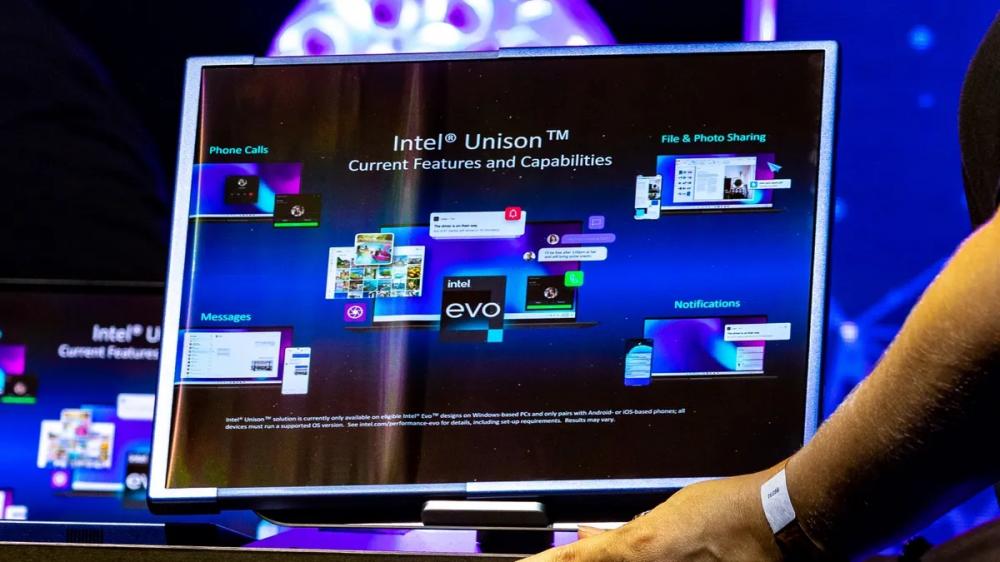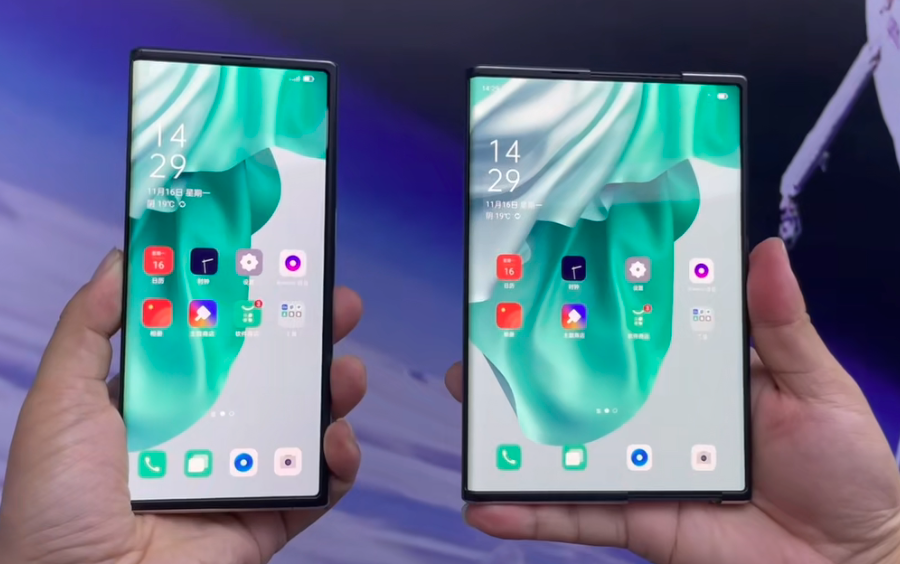According to the Financial Associated Press, at the recent Intel Innovation 2022 Conference, Samsung Display CEO JS Choi demonstrated a new prototype computer.
According to the on-site display, the prototype can be stretched from a 13-inch tablet computer to a 17-inch tablet computer. Its technology uses a "flexible display + sliding mechanism" and the material used is an OLED screen.
There are two types of on-site prototypes. The tablet that can be pulled apart manually is named "Slidable Flex Duet", and the one that can be stretched automatically is named "Slidable Flex Solo". When the computer is fully unfolded, there are some more conspicuous "ripple-shaped" creases on the slidable and shrinkable part on the left side of the flexible screen.

Release the "swipe screen" displayed on site
According to Choi, the prototype is the world's first 17-inch slideable display for PC computers, mainly to meet users' needs for larger screens and portability.
In fact, as early as 2021, Samsung revealed that the company was developing several prototypes of foldable laptops internally. Previously, some industry analysts speculated that the folding screen laptop may be consistent with Samsung's other two folding screen mobile phones.
The debut of the sliding screen laptop also shows that Samsung has chosen a "sliding screen" instead of the traditional inward folding screen in the field of large screens. Although the "sliding screen" still belongs to the category of folding screen technology, this technology direction is beyond the expectations of many people.
According to the model shown at the beginning of this year, Samsung has indeed invested in the development of a more "traditional" laptop with an inward folding screen, the Flex Note, which measures 13 inches when folded and 17 inches when opened. At the same time, it also demonstrated the "sliding screen" technology applied to mobile phones, which can display a list of applications after unfolding.

"Sliding screen" mobile phone Samsung's official promotional video screen
Netizens have mixed reviews for this "sliding" design. Some people think that it changes the folding form of the mobile phone, but many netizens said that if the sliding screen area is small, whether a separate stretched screen is necessary, technical reliability, service life, etc. have yet to be verified.
However, Choi said during the presentation that "the foldable form will eventually disappear" on the PC computer.
It is reported that the prototype is not yet equipped with a keyboard. However, as the design matures, the prototype could add a keyboard, such as one that folds from below, according to Holthas, head of Intel's PC computer chip group.
At the same time, he also said that the moving parts and flexible components of the "sliding screen" have increased the complexity of the product and the challenges of reliability. During the decline in the consumption of the PC computer market, the cost is also a worrying issue. But novel designs can find a niche, and high-end PCs far outperform cheap PCs.
Many netizens compared it with a "scrolling screen" concept mobile phone displayed by OPPO in 2021. Both use the folding technology of rolling inward and unfolding from the left, which can be automatically unfolded after pressing a button, and also have "ripple" creases. It's just that OPPO's "rolling screen" mobile phone is expanded from 6.7 inches to 7.4 inches.

Evaluation of the OPPO X 2021 scroll screen concept machine in the hands of bloggers
In view of the fact that the launch date of OPPO's "scroll screen" mobile phone is nowhere in sight, and from the perspective of previously announced technical performance, the scroll design has higher requirements for screen technology, plasticity and hinge stability.
Today's "sliding screen" seems to be an enlarged version of OPPO's "scrolling screen". Some netizens think that this product is very "sci-fi", just like props in movies, and it may be the future development direction of computers. However, most netizens only expressed their wait-and-see attitude towards Samsung's "sliding screen" laptop, expecting the official release of more screen parameters.
As of now, the official has not disclosed the launch date of the product and the possibility of mass production.
While Samsung and OPPO are exploring new screen folding forms, ASUS and Lenovo have successfully launched two inward-folding laptops for sale.
According to the data, the flexible OLED screen used by ASUS Lingyao X Fold was jointly developed by ASUS and BOE. The screen size is 12.5 inches when folded and 17.3 inches when unfolded. It is said to be the largest flexible OLED foldable product currently mass-produced.
This computer is equipped with a keyboard that can be attached to the inner screen. After folding, the screen will not be completely closed, and the keyboard can be put into it.
Lenovo's ThinkPad X1 Fold also uses an OLED screen, which is 12 inches when folded and 16.3 inches when unfolded. The keyboard can be automatically attached to the inner screen or controlled by Bluetooth. It is the second generation of this series of computers.
Unlike ASUS products, after the laptop is upgraded, the folding screen will fit perfectly, and the keyboard cannot be placed in it, but it can be attached to the back panel to carry it. The product is currently on sale.
However, whether it is Lenovo's previous generation of folding screen laptops, or ASUS' new folding screen laptops this year, they are all facing an embarrassing dilemma.
Because the brand sacrificed most of the heat dissipation design of this computer in order to achieve "thin and light" weight, and the processing performance is poorer than that of ordinary notebook computers, it becomes hot after use, runs slowly, and cannot run complex work software has become a problem. The body weight of this type of notebook computer is often 1.2kg~1.5kg, and it cannot be held or lifted for a long time.
The starting price of the above two folding screen laptops is more than RMB 15,000. Under the premise of Pads, mobile phones and traditional thin and light laptops, most consumers do not know where their application scenarios are after experiencing them. Think cost performance is low.
Judging from the on-site display of Samsung's "sliding screen" prototype, the thicker shape and huge folding screen seem to indicate that this product may also face the above-mentioned problems. Brands still have a long way to go from prototypes and concept machines to products that are truly accepted by the public.